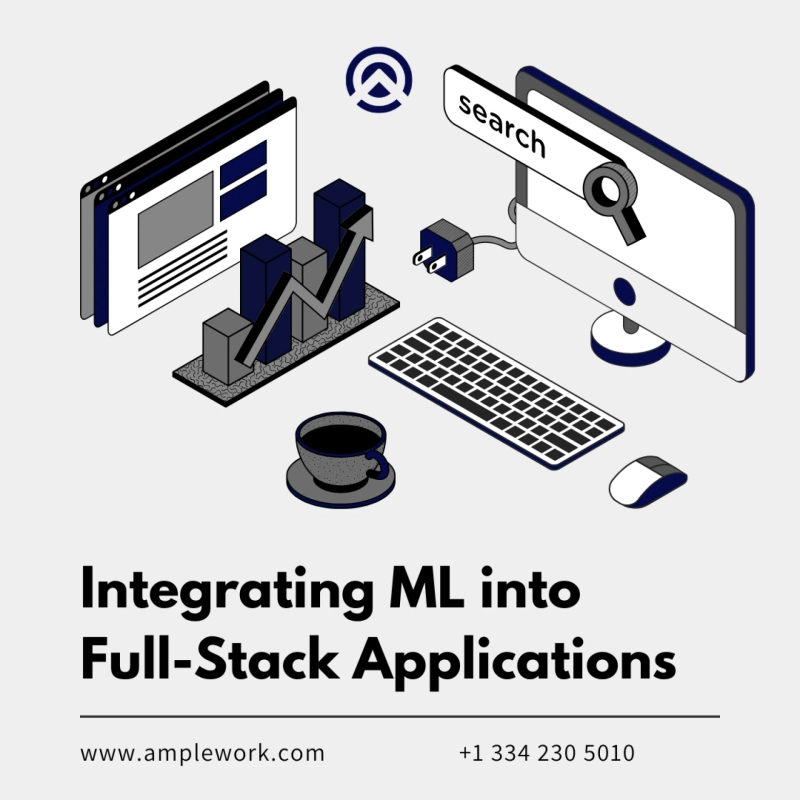Introduction
Machine learning (ML) is revolutionizing the software industry by enabling applications to learn, adapt, and make intelligent decisions. Full stack developers are now integrating ML models into their applications to enhance user experience, automate tasks, and provide data-driven insights. Businesses seeking full stack development services must understand the significance of incorporating ML into their systems to stay competitive.
Why Integrate Machine Learning into Full Stack Applications?
Machine learning integration enhances full stack app development by providing features like predictive analytics, personalized recommendations, natural language processing (NLP), and automated decision-making. By leveraging ML, businesses can achieve:
- Enhanced User Experience: Personalized suggestions based on user behavior.
- Automation: Reduction of manual work through AI-driven processes.
- Data-Driven Insights: Better decision-making by analyzing vast amounts of data.
- Improved Security: Fraud detection and anomaly recognition using ML models.
Key Components of ML Integration in Full Stack Development
To successfully integrate machine learning into full stack development solutions, developers must work with three key layers:
1. Frontend Integration
The frontend handles the user interface and interaction. When integrating ML, frontend technologies like React, Angular, or Vue.js can be used to visualize predictions and insights. For instance:
- Chatbots with NLP (e.g., integrating OpenAI’s GPT models into a web application).
- Real-time recommendation engines for e-commerce platforms.
2. Backend Development
The backend processes the ML model’s data and responses. Full stack developers leverage Python (Flask, Django), Node.js, or Ruby on Rails to connect with ML frameworks such as TensorFlow, PyTorch, and Scikit-learn. Essential backend tasks include:
- Model Training & Deployment: Using APIs to serve ML models.
- Data Handling: Processing large datasets efficiently.
- Authentication & Security: Protecting ML endpoints from unauthorized access.
3. Database & Data Processing
Machine learning requires structured and unstructured data processing. Developers work with databases like PostgreSQL, MongoDB, or Firebase to store and retrieve relevant data. Additionally, tools like Apache Kafka and Hadoop are used for big data management.
Steps to Integrate ML into a Full Stack Application
1. Define the Use Case
Identify the problem you aim to solve, such as recommendation systems, fraud detection, or sentiment analysis.
2. Select the Right ML Model
Use pre-trained models or build custom models using libraries like TensorFlow, Scikit-learn, or Keras.
3. Develop & Train the Model
- Collect and preprocess the data.
- Train the model with appropriate algorithms.
- Optimize performance through fine-tuning.
4. Deploy the Model
- Deploy as a REST API using Flask or FastAPI.
- Use cloud services like AWS SageMaker, Google AI Platform, or Azure ML.
- Integrate the API into the backend of your full stack application.
5. Integrate with Frontend
- Fetch predictions using API calls.
- Display insights using visualization libraries like D3.js or Chart.js.
6. Monitor & Optimize
- Use logging and monitoring tools to track model performance.
- Update the model based on new data.
Challenges & Best Practices
Challenges
- Data Privacy & Security: Ensuring user data is protected.
- Scalability Issues: Handling large-scale ML operations efficiently.
- Model Drift: Keeping models updated with real-world data changes.
Best Practices
- Use cloud-based ML platforms for seamless integration.
- Optimize model performance to reduce latency.
- Follow security protocols to prevent unauthorized access.
- Continuously test and improve ML algorithms.
Why Hire a Full Stack Development Company for ML Integration?
A professional full stack development company provides end-to-end ML integration, from selecting the right models to deploying scalable solutions. Businesses that hire full-stack developers with ML expertise gain:
- Faster deployment of AI-driven applications.
- Seamless integration of ML models with existing infrastructure.
- Cost-effective development with optimized performance.
Conclusion
Integrating machine learning into full stack applications enhances functionality and user experience. Businesses leveraging full stack development services for AI integration can automate tasks, gain deeper insights, and improve operational efficiency. To stay ahead in the competitive digital landscape, it's crucial to hire full stack developers who specialize in AI-driven full stack app development.
By adopting ML-powered full stack development solutions, companies can create smarter, more responsive applications that cater to modern user needs.


